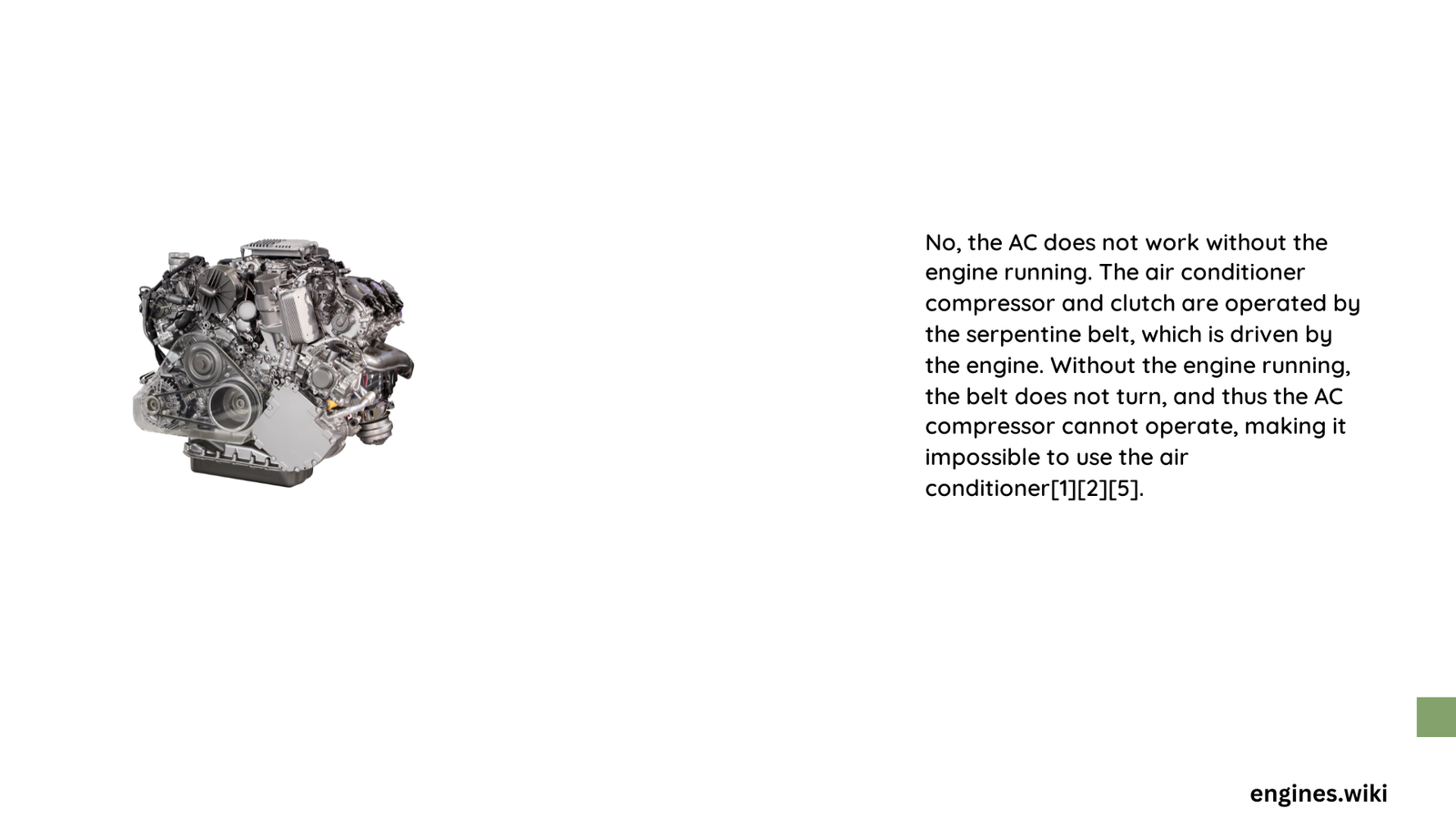Car air conditioning systems are complex mechanical networks fundamentally dependent on engine operation. When an automobile’s engine stops, the primary cooling mechanism becomes non-functional due to critical component interdependencies. Most standard vehicle AC systems cannot generate cold air without active engine power, primarily because the compressor requires mechanical energy from the engine’s serpentine belt to compress refrigerant and initiate the cooling cycle.
What Prevents AC from Working Without Engine?
How Do AC Components Function?
Vehicle air conditioning systems involve several interconnected components:
| Component | Function | Engine Dependency |
|---|---|---|
| Compressor | Refrigerant compression | High |
| Condenser | Temperature reduction | Moderate |
| Evaporator | Cooling air | High |
| Blower Motor | Air circulation | Low |
Compressor: The Critical Power Consumer
The compressor represents the most energy-intensive component in the AC system. It requires substantial mechanical power, typically derived directly from the engine’s rotational energy. Without engine operation, the compressor cannot:
- Compress refrigerant
- Generate pressure differentials
- Initiate cooling cycle
Can Battery Power Substitute Engine Power?
While some advanced electric vehicles feature independent AC systems, traditional automobiles face significant limitations:
- Battery Drain Risks
- Running AC without engine rapidly depletes battery
- Potential electrical system damage
-
Limited cooling duration
-
Power Requirements
- AC compressor demands 3-5 kilowatts of continuous power
- Standard vehicle batteries cannot sustain prolonged operation
Alternative Cooling Strategies
For situations requiring cabin cooling without engine operation, consider:
- Portable battery-powered fans
- Solar-powered ventilation systems
- Pre-cooling techniques before engine shutdown
- Parking in shaded areas
Technical Insights: AC System Mechanics

Modern automotive cooling systems rely on precise thermodynamic principles. The refrigeration cycle requires:
- Continuous pressure manipulation
- Temperature transformation
- Consistent mechanical energy input
When the engine stops, these fundamental requirements cannot be met, rendering the standard AC system inoperative.
Emerging Technologies
Some contemporary vehicle designs explore alternative cooling mechanisms:
- Electric compressor systems
- Hybrid vehicle cooling technologies
- Independent battery-powered cooling units
Practical Recommendations
- Avoid running AC without engine
- Use alternative cooling methods
- Maintain proper vehicle ventilation
- Consider technological upgrades
Potential Future Developments
Automotive engineers are continuously developing:
– More efficient electric compressors
– Enhanced battery storage technologies
– Independent cooling systems
Conclusion
Vehicle air conditioning systems are intricately designed mechanisms fundamentally reliant on engine operation. While technological advancements promise future alternatives, current automotive AC systems cannot effectively function without active engine power.
